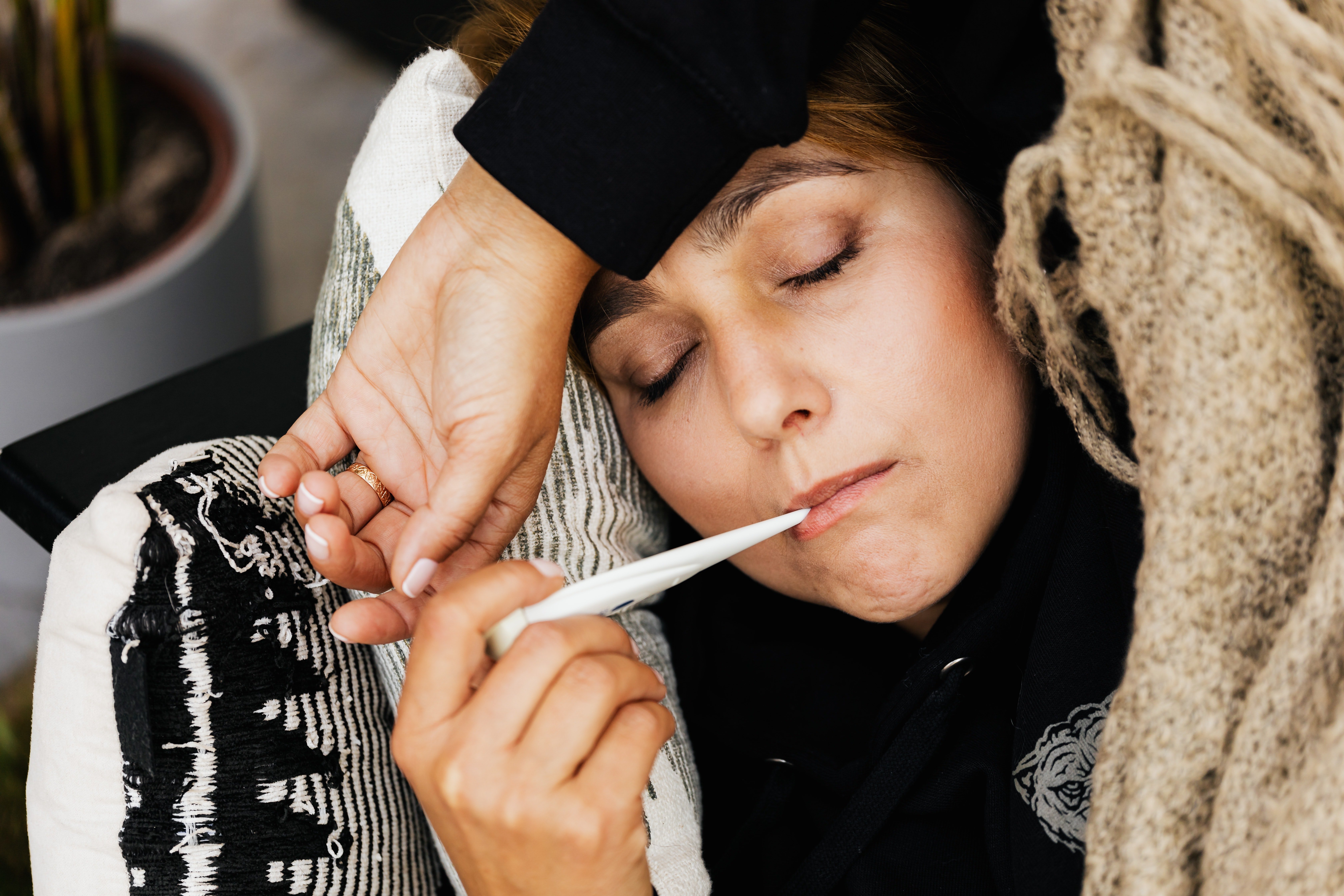
Seasonal Allergies, Flu, Cold, or COVID-19: What Are the Differences?
Illness can develop any time of year, but cases of viruses reliably start to rise in the fall and continue to surge until spring. When the sniffles and coughs start, you may wonder what you’re suffering from. Is it the common cold? Is it seasonal allergies? Is it COVID? Your doctor can accurately diagnose your symptoms for a more effective treatment plan.
What Are the Differences Between Seasonal Allergies, the Flu, the Common Cold, and COVID-19?
Allergies are your immune system’s reaction to allergens (substances that trigger allergies), such as pollen or pet dander. Allergy season starts in the spring and continues until the fall, but different allergens appear at different times.
The common cold, influenza, and COVID-19 are all contagious respiratory illnesses caused by different viruses. They are spread from person-to-person, mainly by large and small particles that are expelled when people with the illness cough, sneeze, or talk. It’s also possible that a person can get infected by touching a surface or object that has virus on it and then touching their own mouth, nose, or eyes.
Many of these conditions cause similar symptoms. It’s easy to get them mixed up. To get an idea of what you’re suffering from, we have created a chart of common ailments.
.png?width=800&name=Common%20Symptoms%20(2).png)
2021 Cold Season Expectations
Every season plays out differently, especially since COVID-19 health precautions became commonplace. Mitigation measures for COVID-19 (such as social distancing, mask wearing, and remote working) appears to have helped curb the spread of flu and other viruses, especially last fall and winter when flu cases typically spike. As of today, flu activity is significantly lower compared to previous years.
However, the main reason why flu cases are down during this pandemic is the fact that more adults have been vaccinated against the flu in 2020 compared to the previous year’s season. This also explains why COVID-19 cases are rising—predominantly among those who have yet to be vaccinated.
For allergy sufferers, 2021 may have been your worst year for symptoms yet. Due to climate change, warmer temperatures lead to more pollen production. Southern California’s periodic Santa Ana winds can blow warm, sometimes hot air from the desert anytime between September and May. This exacerbates allergy issues by stirring up and carrying pollen and dust.
If people continue to stay up to date with their vaccinations and continue to practice effective health precautions, it’s possible that we could see another year of low cold and flu rates. Depending on the area where you live and its COVID-19 transmission rate, you may experience what feels like more intense illnesses as health restrictions ease. This is because your body may be more sensitive to things like allergies and viruses due to quarantine and the lack of exposure to common germs.
The future of COVID-19 is still being decided. The coronavirus will likely continue to spread throughout the unvaccinated population, and we may see new variants as a result. Seeking vaccination approval for children will also help curb the spread of COVID-19.
How to Prepare for Allergy Season
If you suffer from seasonal allergies, you can manage your symptoms with over-the-counter remedies. Several types of nonprescription medications can help, including oral antihistamines, decongestants, or nasal spray. You can also relieve your allergy symptoms by doing the following:
- Stay indoors on dry, windy days.
- Close doors/windows and opt for air conditioning when possible.
- Use HEPA filters for vacuums and HVAC systems.
- Remove clothes you’ve worn outside and shower to rinse pollen from your skin and hair.
- Wear a pollen mask outdoors.
- Clean floors often.
- Use an air purifier and dehumidifier around the house.
If these management options are not enough, see your doctor.
How to Protect Yourself Against Viral Illnesses
Thankfully, many of the COVID-19 health practices we’ve instilled—such as mask wearing, hand washing, and social distancing—have been effective in reducing virus spread. This includes reducing cold, flu, and COVID-19 cases. We recommend protecting yourself against these viral illnesses by doing the following:
- Get vaccinated for COVID-19 and the flu—preferably before the end of October.
- Wear a mask—especially when indoors or around a large gathering of people.
- Stay at least 6 feet (about two arm lengths) from others who don’t live with you.
- Clean your hands often, either with soap and water for 20 seconds or a hand sanitizer that contains at least 60% alcohol.
- Avoid contact with people who are sick.
- Take vitamins to help strengthen your immune system. Vitamin D, probiotics, zinc, elderberry, and vitamin C are popular choices, but consult with your doctor first.
- Cover you cough or sneeze with a tissue, then throw the tissue in the trash.
- Clean frequently touched objects and surfaces daily.
When to Visit Your Doctor
If you have any doubts or questions, it’s best to call your doctor. Sometimes, it’s hard to know for sure which germ is causing the problem. An illness that seems like a cold can turn out to be the flu or COVID-19. Your doctor may do some tests to find out.
Seasonal allergies and colds are easily self-manageable. However, you should get medical care right away if you:
- Seem to be getting worse
- Have trouble breathing
- Have a high fever (103°F or higher)
- Have a bad headache
- Have a sore throat
- Seem confused
- Have severe belly pain
- Have pain or pressure in your chest
- Have trouble staying awake
- Look bluish in the lips or face
